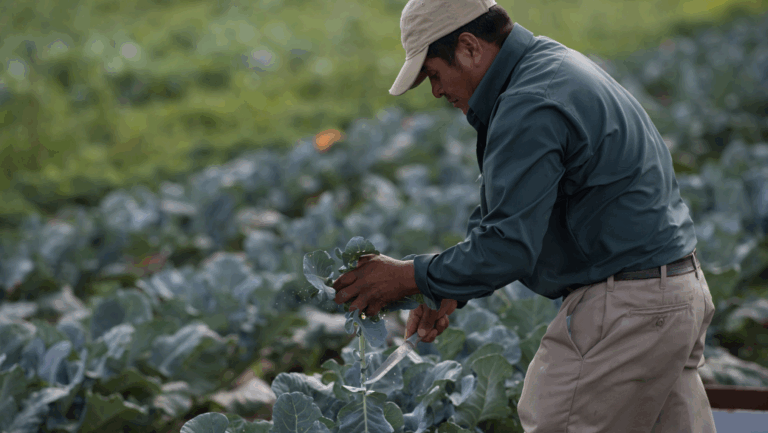U.S. Grain Market Update
Disrupted trade and low prices are creating a year of financial strain for many U.S. grain producers.
There’s no question, it’s been a challenging year for the U.S. grain market and its producers. Low prices, tense trade relationships, and government support stuck in limbo have placed unprecedented pressure on farm finances for even the most seasoned grain producer.
With profit margins constricting and uncertainty at an all-time high, understanding the impact of global market trends and domestic policy shifts on grain prices gives producers an advantage when planning for the following year. For many, staying proactive and adaptive when it comes to marketing and financing decisions will be key in turning a challenging season into one of stability and long-term strength.
To help American grain producers do this, here is a brief overview of the U.S. grain market in 2025 and financial strategies producers can implement in their 2026 plan.
A Murky Road Ahead for the U.S. Grain Market
Corn exports to Mexico have provided a crucial lifeline for U.S. producers in 2025, offsetting weak domestic ethanol margins and policy uncertainty surrounding the expansion of E15. Meanwhile, China’s trade standoff with the U.S. and continued preference for South American soybeans have stifled U.S. export growth.
Recent developments suggest that the U.S. soybean buying freeze may be beginning to thaw, with a promise from China to purchase a minimum of 25 million tons annually for the next three years, according to Treasury Secretary Scott Bessent. So far, neither has come to fruition, and neither has the promise of short-term financial relief through government support.
Due to this, the uncertainty in the 2025 grain market is prompting U.S. producers to walk a fine line between short-term survival and long-term strategy.
Economic Forces Impacting U.S. Grain Producers
Input Costs and Inflation
Since 2018, production costs for farmers have increased by more than 36 percent. In 2025, farm input prices have remained stubbornly elevated, eroding working capital and reducing flexibility. According to the latest USDA projections, net farm income for row crop producers is expected to trail that of the livestock sector in 2025, heightening financial pressure on crop-heavy operations.
Policy and Government Uncertainty
Policy remains a key swing factor for the U.S. grain market. The recent withdrawal of Big Oil’s support for E15 has cast doubt on future ethanol demand growth, an important driver of corn demand. Likewise, delayed USDA reports and relief programs amid the government shutdown have the hope of government assistance payments stuck in limbo, while making marketing and risk management decisions without a crystal ball more challenging.
Rural Economic Weakness
October’s RMI Rural Mainstreet Index fell to a five-year low, signaling reduced business activity and slower credit flow across farm country. This broader softness is placing pressure on local input suppliers, lenders, and farm cash flow as we head into winter.
U.S. Corn Market: Supported by Mexico, Limited by Policy
Export Momentum
Strong Mexican demand continues to support the U.S. corn market, helping offset domestic policy uncertainty and uneven harvest results. However, analysts warn that these gains could be short-lived if biofuel policy stalls or if global grain competition intensifies.
Margin Pressures and Storage Challenges
While export strength provides short-term price stability, on-farm and commercial storage offers limited upside this year. Unless biofuel incentives expand or global demand accelerates, storing grain is more a risk management strategy than a profit-driven approach right now.
Bottom line: Liquidity and flexible financing options remain critical lifelines for corn producers managing tight margins.
U.S. Soybean Market: Pressure from Global Competition
Trade Shifts
China’s shift away from U.S. soybeans toward South American has weighed heavily on American producers thus far in 2025. In September, soybean imports from the U.S. fell to zero for the first time since late 2018, while Brazil and Argentina saw significant gains. Fortunately, there’s cause for cautious optimism. Treasury Secretary Bessent recently announced that China will purchase 12 million metric tons of U.S. soybeans this year, with commitments for 25 million tons annually over the next three years. That could help restore some lost market share if realized.
Market Impact
Soybean futures have slid significantly through 2025, pressured by global surplus, weaker demand, and trade uncertainty. In many regions, weak basis levels underscore that export demand remains insufficient. Lower export demand continues to erode producer margins and elevator bids, prompting producers to reassess their timing, market outlets, and plant rotations.
Secondary Grain Markets: Wheat, Sorghum, and Barley
While wheat, sorghum, and barley are important aspects of the U.S. grain market, current market volatility throughout the year continues to center on corn and soybeans, which represent over 70 percent of the total grain and oilseed value. However, these secondary grain markets are facing their own headwinds.
Wheat prices are under pressure from ample global supply and competitive exports, with U.S. farm prices forecast to be lower and margins tightening. Fortunately, export demand is providing modest support. Sorghum production is up slightly, but producers are also feeling the impact of reduced Chinese purchases and shifting global trade. Barley remains a smaller, more niche market focused on malting and feed, with stable production but limited price upside.
Across the grain market, producers face a mix of market signals. Tightening margins require careful and proactive management of storage, marketing, and input costs to maintain profitability and operational flexibility.
Financial Tips for Producers Navigating U.S. Grain Market Conditions
1. Reassess Marketing and Risk Strategies
Diversify your market exposure through forward contracting, storage strategies, and strategic sales timing. Maintaining flexibility allows producers to adapt as trade or policy changes unfold.
2. Strengthen Liquidity
With delayed government programs and tight margins, maintaining access to working capital is essential. Refinancing existing debt or consolidating loans can free up cash flow when it’s needed most.
3. Build Long-Term Resilience
Long-term resilience is about structuring your operation to adapt and grow. Consider diversifying your crops or production methods to spread risk. Explore agribusiness growth opportunities, such as vertical integration through on-farm processing, or pursue horizontal growth by acquiring additional acreage or entering new markets. By aligning growth and diversification with market trends and risk management, producers can strengthen margins and position their operations for long-term stability.
Don’t Wait to Build Resilience in the 2025 Grain Market
The current grain market underscores the importance of proactive financial planning. Whether corn prices remain supported by exports or soybean markets continue to face an uphill trade battle, every producer can benefit from a stronger financial foundation without relying on government-backed assistance to see them through.
AgAmerica partners with grain producers to strengthen financial resilience through flexible loan structures designed for volatile markets. Whether it’s refinancing existing debt or exploring a new market, AgAmerica is here to help farmers stay grounded amid uncertainty and come out stronger on the other side.
Contact us today to learn more about our custom financing solutions.






